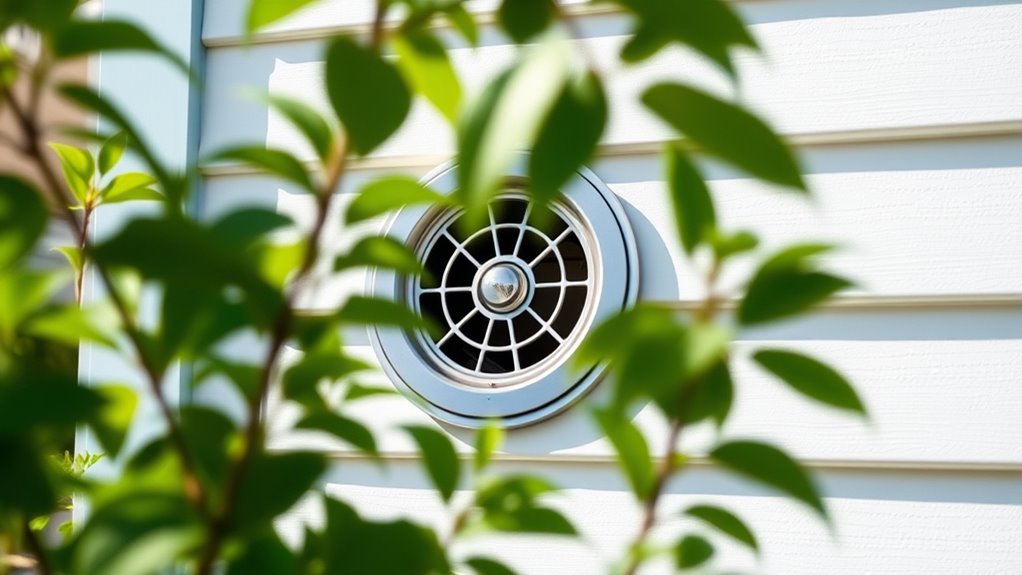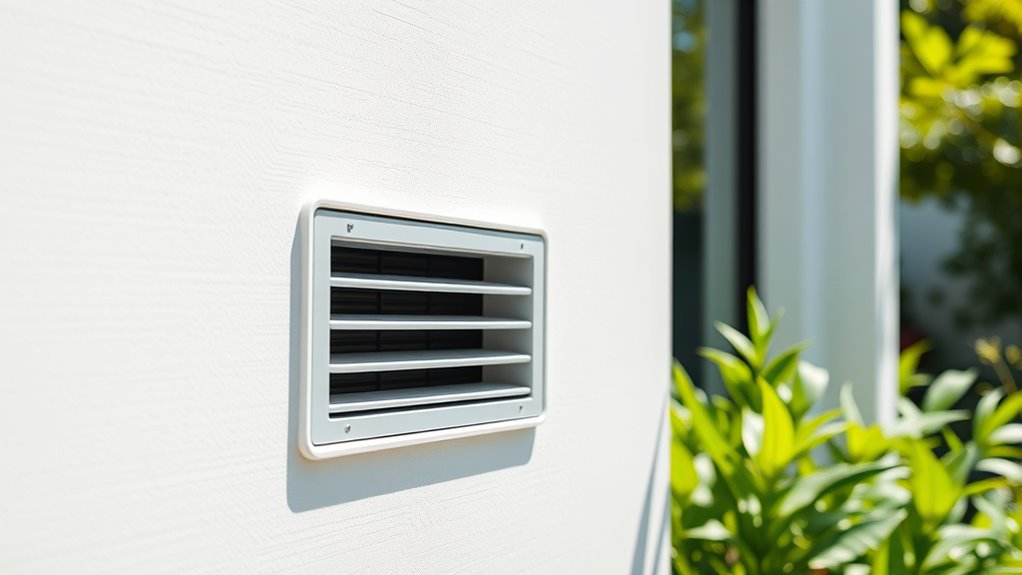If your home is airtight, a fresh air intake system can ensure improved indoor air quality by bringing in cleaner outdoor air and reducing pollutants, allergens, and stale smells. You should consider installing one, especially in rooms like bedrooms and living areas that need good ventilation. Proper placement is key—away from busy roads or pollution sources to ensure better air. Want to discover the best options for your space? Continue to find out more.
Key Takeaways
- Fresh air intake systems improve indoor air quality by bringing in cleaner outdoor air and reducing pollutants buildup.
- They are especially beneficial in airtight homes with limited natural ventilation.
- Proper placement of intake vents, away from pollution sources like busy roads or kitchens, maximizes effectiveness.
- Integrating filters and sensors enhances air quality control and system efficiency.
- Installing a fresh air intake promotes healthier living environments and can be tailored to your home’s ventilation needs.

Have you ever wondered if the air inside your home is as fresh as it could be? It’s a common concern, especially since indoor air quality can substantially impact your health and comfort. Many homes rely on sealed windows and airtight construction to improve energy efficiency, but this can unintentionally trap pollutants, allergens, and stale air inside. That’s where a fresh air intake system can make a real difference. These systems work with your existing ventilation systems to bring in cleaner, outdoor air, helping maintain a healthier indoor environment.
Your home’s air quality depends on how well you exchange indoor and outdoor air. Without proper ventilation, airborne particles, humidity, and odors tend to build up, which can lead to respiratory issues, allergies, or simply an uncomfortable living space. Ventilation systems designed for fresh air intake can address this problem by continuously supplying fresh air while filtering out pollutants. They often include filters that trap dust, pollen, and other allergens before the air enters your home, ensuring you’re not just bringing in outdoor air but cleaner outdoor air.
Proper ventilation ensures fresh, clean indoor air and protects against pollutants, allergens, and odors buildup.
Installing a fresh air intake isn’t just about comfort; it’s about creating a healthier environment. These systems can be integrated into your existing HVAC setup or operate independently. In homes with tight sealing or energy-efficient windows, the need for such systems becomes even more vital because natural ventilation is limited. By actively controlling how much outdoor air enters, you prevent indoor air from becoming stagnant or polluted. Plus, modern systems often come with sensors that monitor air quality levels in real time, adjusting airflow accordingly to maintain ideal conditions.
Where should you consider installing a fresh air intake? Typically, the best spots are areas less exposed to pollutants, such as bedrooms or living rooms. In these spaces, fresh air can improve sleep quality and overall comfort. Avoid installing intake vents near sources of pollution, like busy roads, garages, or kitchens, unless the system has robust filtration. Proper placement ensures that the air you breathe indoors is as pure as possible while avoiding introducing external contaminants.
Incorporating a fresh air intake at strategic points in your home, especially in conjunction with a well-designed ventilation system, can drastically improve your indoor air quality. It’s a proactive way to ensure that stale, polluted indoor air doesn’t compromise your health or comfort. Whether you’re upgrading an existing system or installing a new one, understanding where and how to bring fresh air inside is key. After all, breathing clean, fresh air isn’t just a luxury — it’s a fundamental part of maintaining a healthy home environment.
Frequently Asked Questions
How Often Should I Service My Home’s Fresh Air Intake System?
You should service your home’s fresh air intake system every 6 to 12 months. During this maintenance schedule, check the filters and replace them if they’re dirty or clogged to guarantee ideal airflow and indoor air quality. Regular maintenance keeps your system running efficiently, prevents dust buildup, and extends its lifespan. Don’t forget to inspect for any damage or blockages, and schedule professional servicing if needed for thorough cleaning.
Can a Fresh Air Intake Reduce Indoor Pollutants Effectively?
Yes, a fresh air intake can effectively improve air quality by reducing indoor pollutants. It brings in outside air, helping to dilute indoor contaminants like dust, pet dander, and volatile organic compounds. By continuously exchanging stale indoor air with fresh outside air, it supports pollutant reduction and enhances overall air quality improvement. Regular maintenance ensures your system functions at its best, providing cleaner, healthier indoor environments.
Is a Fresh Air Intake Suitable for Small Apartments?
A fresh air intake can be suitable for small apartments, even with space constraints. You might worry about clutter or limited room, but compact ventilation systems fit easily into tight spaces. They improve apartment ventilation by bringing in fresh air and reducing indoor pollutants. With careful placement, a fresh air intake enhances your home’s air quality without overwhelming your space, making it a practical solution for small apartment living.
What Is the Typical Cost of Installing a Fresh Air Intake System?
A typical cost estimate for installing a fresh air intake system ranges from $1,000 to $3,000, depending on your home’s size and system type. During the installation process, a professional will assess your space, select the right system, and install it efficiently. Keep in mind that costs may vary based on labor, materials, and whether you need additional ductwork or modifications, so get multiple quotes to find the best option.
How Does Climate Affect the Need for Fresh Air Intake?
Ironically, in a humid climate, you might think fresh air intake isn’t necessary—after all, who needs more moisture? But high humidity levels actually harm air quality and promote mold. In dry climates, you need fresh air to prevent stale, dusty air from lingering. Climate directly influences your home’s air quality, making a fresh air intake essential to balance humidity and keep the air clean, no matter where you live.
Conclusion
Ultimately, adding a fresh air intake can breathe new life into your home’s air quality. If you’re feeling stuffy or noticing musty odors, it’s a sign you might need one. Think of it as giving your home a gust of fresh air — turning a closed-up space into a healthier, more comfortable haven. Don’t wait until the situation gets worse; sometimes, a little change can make all the difference.









